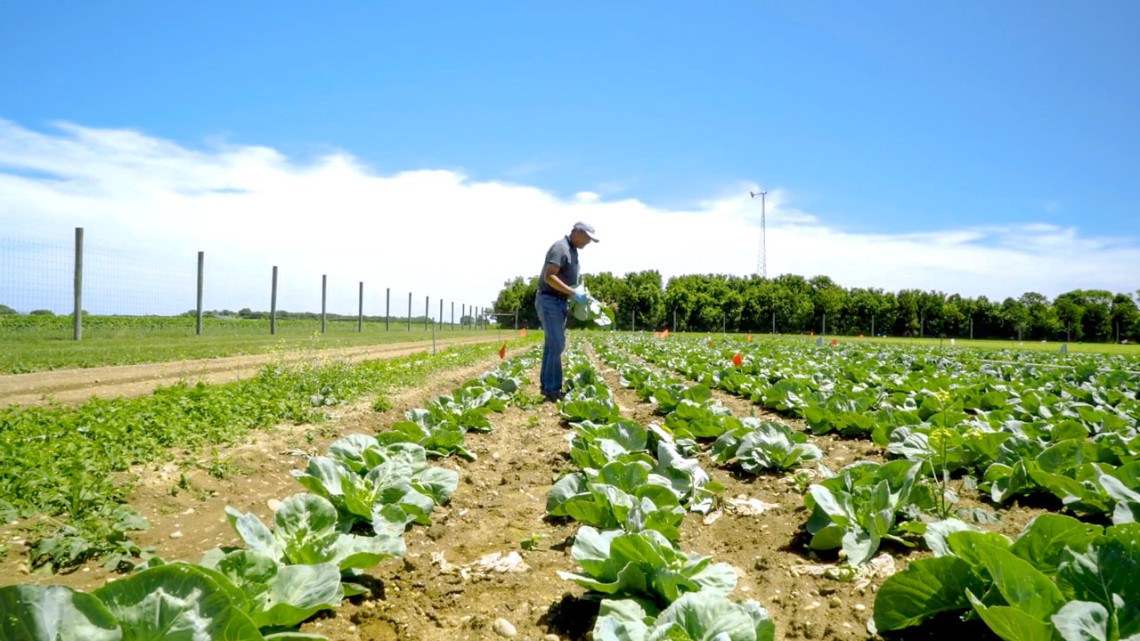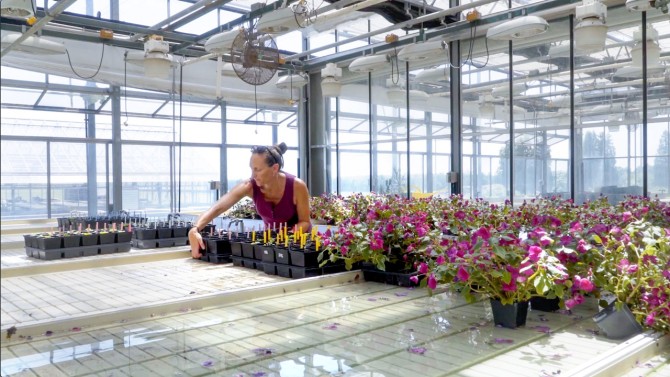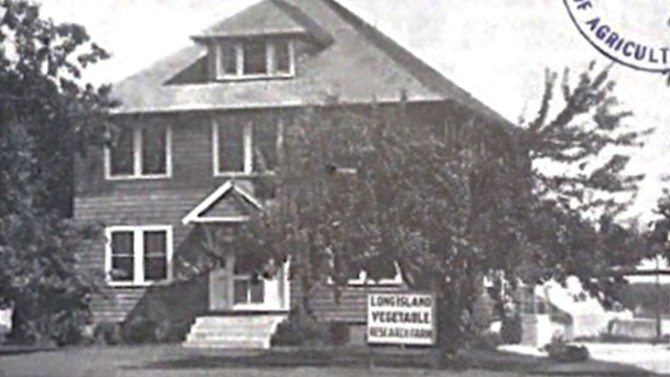
Now in its 100th year, the Long Island Horticultural Research and Extension Center features 68 acres of field research plots, 20,000 square feet of greenhouse space, a plant tissue culture laboratory, grape vineyard and ornamental plant nursery.
‘One-stop shop’ marks century of ag research, extension on L.I.
By James Dean, Cornell Chronicle
On the eastern tip of Long Island this summer, the blossoms of nearly 1,000 impatiens plants produced a kaleidoscope of red, orange, pink and purple spanning roughly an acre.
The popular flowers were not decorative but part of a multiyear effort by the Long Island Horticultural Research and Extension Center (LIHREC) to develop varieties resistant to a downy mildew that has devastated impatiens sales in New York state. The decline from more than $10 million in 2009 to about $2 million a decade later particularly hit the center’s home of Suffolk County, which leads the state in the value of crops produced.
“It was a big economic problem, with the greenhouse industry being so strong here,” said Mark Bridgen, LIHREC director and a professor in the School of Integrative Plant Science in the College of Agriculture and Life Sciences (CALS). “And that’s what we’re here for – to do applied research to help the agricultural and horticultural businesses of Long Island.”
On Sept. 22 in Riverhead, the LIHREC, part of the Cornell University Agricultural Experiment Station, will formally mark a century of dedication to that mission. A celebratory event with tours and remarks will welcome dignitaries expected to include President Martha E. Pollack; Benjamin Z. Houlton, the Ronald P. Lynch Dean of CALS; and local elected officials.
Earlier this year, the New York State Legislature approved a resolution commemorating the “pioneering research facility [that] continues to serve the diverse agricultural community on Long Island.”
Established in 1922 as the Long Island Vegetable Research Farm, the current 68-acre facility includes fields and research plots; 20,000 square feet of state-of-the-art greenhouse space; a plant tissue culture and micropropagation laboratory; a grape vineyard; acres dedicated to organic research; and an ornamental plant nursery.
It’s the nation’s only horticulture center offering expertise in every commodity, Bridgen said – from greenhouse and floriculture to nursery and landscape plants, vegetables, and fruit. A team of 10 scientists provides expertise across the disciplines of plant pathology, entomology, weed science and plant tissue culture.
“We’re a one-stop shop,” Bridgen said. “And we’re a true extension center. Most of our stakeholders are within a 50-mile radius, so we really interact with them and try to help them solve their problems with diseases or bugs.”
Early on, the center researched commercially important crops including cabbage, cucumber, corn and potato. Over the years, the region’s agricultural focus has shifted to fruit, vineyards and ornamental plants.
In addition to the impatiens project, Bridgen said recent research highlights include:
- Development of disease-resistant plants and research on slow-release fertilizers to reduce pesticide use and groundwater contamination.
- Disease monitoring supporting growers and researchers nationwide.
- Research on integrated management methods to curb diseases resulting from increasingly intense rainfall caused by climate change.
- Evaluating conventional fungicides and biopesticides for organic production.
Looking ahead, Bridgen said climate change will increasingly drive the center’s research priorities, likely to include more heat- and drought-tolerant plants. Looking back, he said mildews have posed a constant challenge over the past 100 years.
Among the impatiens recently, a control group of about 50 plants fell victim to the downy mildew pathogen – a fuzzy white substance that causes leaves and petals to drop within days, leaving behind only stems. But neighboring plants are showing broad-spectrum resistance to various mutations of the disease, Bridgen said.
The research, supported by the New York Farm Viability Institute, seeks to improve the plants’ natural resistance. Native species found to be more mildew-resistant are being hybridized with the common impatiens, gradually strengthening resistance over successive generations.
“If we can develop resistant plants genetically,” Bridgen said, “that helps avoid the need for additional fungicides and chemicals.”
The early effort is showing promise, Bridgen said, but will require, well, patience. He expects that within five years the center will have developed varieties that could help restore sales across the state to former levels.
“As agriculture evolves on Long Island,” Bridgen said, “we’ll continue to respond to the needs of the horticultural industries and continue to educate and support growers with practical information generated by Cornell specialists.”
Get Cornell news delivered right to your inbox.
Subscribe


